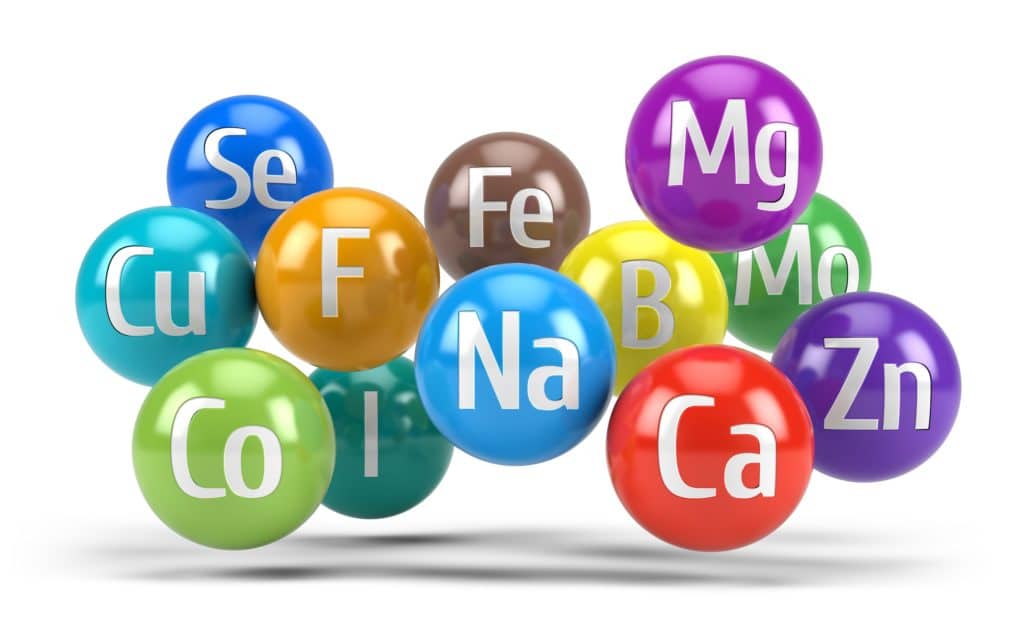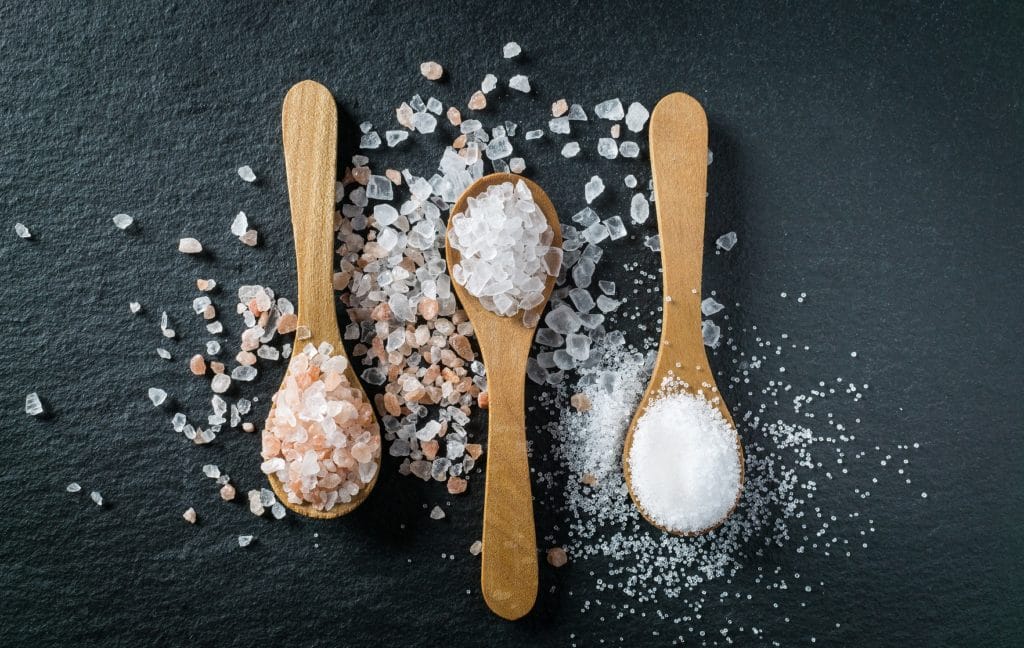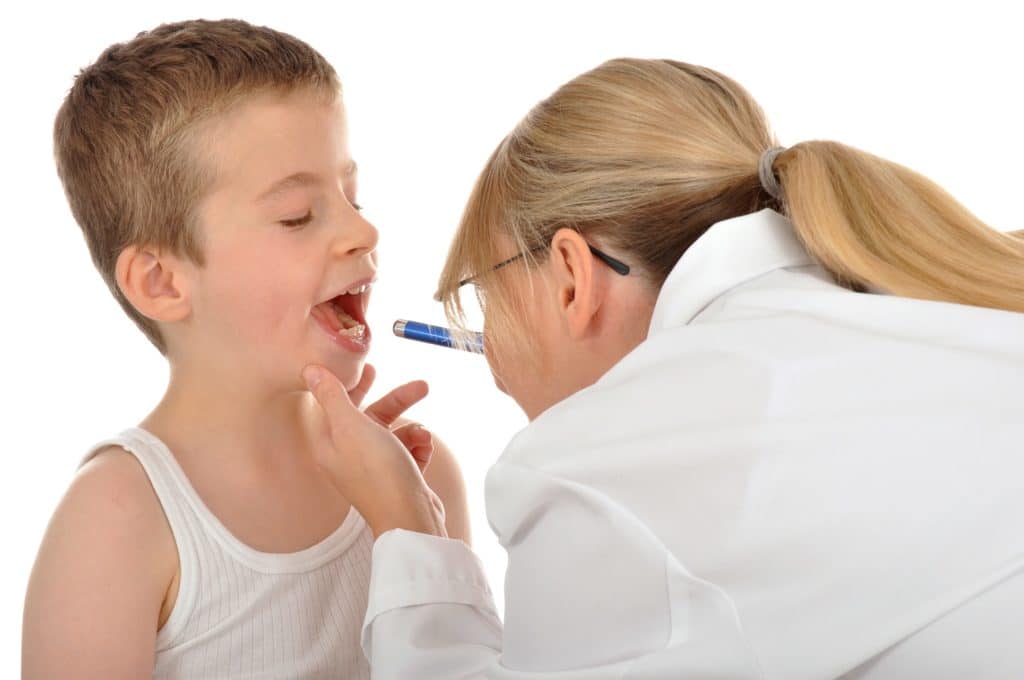Sodium excess (Hypernatremia) – causes, symptoms and treatment

Hypernatremia – causes and symptoms
Sodium is the most abundant electrolyte in the human body. It is found mainly in the blood and in the extracellular fluid. Along with potassium sodium is the most important Element for the regulation of the fluid balance. In addition, it is relevant for the cardiac rhythm and the functionality of nerves and muscles and has an effect on the blood pressure.
Table of contents
For the Regulation of fluid balance and the other functions of a well-balanced mixture ratio between the sodium and fluid is necessary. Certain mechanisms may alter this Ratio and lead to the concentration of sodium increases in the blood. This condition is known as Hypernatremia if the sodium level exceeds that in the blood serum, a value of 145 mmol/L. Usually, it is between 135 and 145 mmol/L.
An excessive concentration can arise in two Ways. Either the body is too much sodium or too little water or losing too much fluid. The higher sodium concentration in the extracellular space ensures that the cells, the osmotic pressure gradient following the water is removed. They shrink and lose function. Depending on the formation mechanism of the sodium excess, it can lead to different variations of the blood composition.
Lack of fluids causes the blood volume decreases, and the sodium content increases relatively. In the case, one speaks of a Hypernatremia with hypovolemia. In the case of increased sodium intake, blood volume increases (fluid overload), because the excess sodium binds a lot of water.
Causes of Hypernatremia
The most common cause of Hypernatremia is a lack of fluid in the blood, which can in principle arise in two Ways. That is, you either added too little liquid or too much excreted. The elderly, children and intubated patients belong to the risk group of people, which can absorb up to a little liquid and dehydrate. A discrepancy between liquid and recording. The reasons can be very different.

Children forget to drink often and ignore your sense of thirst. This is also true for older people. In the case of a disturbed thirst can come to feel, and the fact that they are not independently able to provide a sufficient water supply. The latter is also used for intubated and severely ill patients. The result is a low intake of fluid is the same in all cases. In the blood, lack of fluids, which leads to a relative increase in the sodium level, even though the absolute sodium amount is not increased.
The second mechanism that can lead to Hypernatremia, is a massive loss of fluid. This can cause seizures diarrhea due to an infection, due to strong Vomiting, excessive sweating, as a result of burns, or by the ingestion of water laxative drugs (diuretics).
Also patients suffering from Diabetes insipidus, are affected. In this disease, which is also called Water diabetes, is a deficiency of the antidiuretic hormone, aldosterone, or a malfunction of the kidney for the increased fluid excretion responsible. The result is that the body is able to concentrate the urine. The thin liquid urine quickly and in large quantity is excreted. Also in these processes, which are accompanied by increased fluid loss, but only its concentration changes, the absolute amount of sodium in the blood. All the previously described forms of Hypernatremia are associated with hypovolemia.
In rare cases, excess Sodium in the blood can also be caused by increased absorption of sodium. This can be the result of a salt-rich diet, in conjunction with the Drinking of liquids which contain a lot of sodium. The second possibility is to include a lot of sodium, the increased supply of the electrolyte by a sodium-rich infusions. This type of Hypernatremia, the increased sodium is taken up, is connected due to the high binding capacity of sodium for water with a Hypervolemia. In mild forms of the blood can remain in a volume approximately equal to (Normovolämie).

Symptoms associated with a sodium excess in the blood
The symptoms that can occur with Hypernatremia, caused by the change in the concentration gradient between Extra – and intracellular space. Outside the cell the sodium content increases, while it remains in the cell. As a result, the cell is deprived of liquid. You are dehydrated, it shrinks and loses function. In this way, the symptoms, which are initially very General and unspecified. You can also be used with other diseases associated. Therefore, Hypernatremia is to diagnose in the beginning, it is often difficult to.
Typical signs include weakness, strong thirst, fatigue, weakness, restlessness, and concentration. Also Edema, usually in the legs, can occur. Another feature in the case of longer-term excess Sodium can fold dehydration signs such as skin and deep-set eyes. The symptoms will be discovered when you happen to be in the context of a routine laboratory diagnostics. In the case of a longer time period of excess Sodium and heavy over the course of the dehydration of the cells especially in the brain and the heart with serious consequences. An increase in the sodium concentration to 180 mmol/L means a danger to life. In the following list of neurological and other symptoms that can occur with Hypernatremia:
- Increase in the muscle self-reflexes,
- muscular Fasciculations,
- Cramps,
- Seizures,
- Headache (Conjunctivitis),
- Apathy,
- Hyperexcitability of the nervous system (Hyper exzitabilität),
- Tremor,
- Confusion,
- Coma,
- Respiratory Failure,
- High blood pressure
- and heart rhythm disorders
Diagnostics
For the diagnosis of Hypernatremia, a thorough medical history belongs in the first place. In it questions on the drinking behavior, food habits, and potential pre-existing conditions can be resolved. Also possible causes of fluid loss such as diarrhea and vomiting, can be obtained. The doctor can get in this conversation are important evidence, justify a suspicion of excess Sodium.
In a subsequent examination, the physician tests the blood pressure, the existence of vigilance, and if signs of dehydration or neurological changes. Examining the skin turgor and dehydration of the characters, by the moisture of the Tongue, the texture of the mucous membranes and the behavior of the skin to look wrinkles. The neurological Tests of the muscle include self-reflections and Checking the alertness and mental functions, the range of the Investigation. The primary diagnosis finally takes place in the laboratory on the determination of the serum sodium value.
In the course of a treatment to compensate for a liquid in the absence of IV, this study is repeated in order to verify the success of the Substitution. The compensation leads to a satisfactory outcome of the laboratory, it suggests that the cause of the fluid deficit is not yet discovered and has been fixed. In the case of a further differential diagnostic investigations need to follow the basic disease find out.
Further diagnostic procedures used in Diabetes insipidus, or not successful fluid compensation, the determination of the urine volume and the concentration of dissolved particles in blood and urine (Osmolality).

Therapy
In many cases, Hypernatremia can be corrected by the Substitution of the liquid in the absence of. This can be done orally or intravenously. The compensation takes place by Infusion, a sodium free glucose solution, which additionally contains mineral substances, to normalize the electrolyte balance.
The Glucose binds to sodium ions in the blood and ejects them from the body, so that they can be excreted in the urine. The compensation should, however, be done slowly, so that the adaptation processes of the organism, time and risk-free run. The persistent sodium excess has manifested itself in the cells as a liquid deficiency. The sodium level is lowered by the supply of fluid to quickly change the osmotic conditions, so that it comes to a rapid water influx into the cells. They swell and can put pressure on the surrounding tissue. Particularly dangerous this can be in the brain. Due to the swelling of the cells a brain is forming edema that can compress the brain mass due to the limited expansibility of the skull. Depending on the localization can be triggered by the above-described neurological symptoms.
In the case of a brain edema, it is recommended in any case, the monitoring of therapy by a doctor urgently. In many cases, the treatment of Hypernatremia consists, in addition to the Fluid replacement in the treatment of the causative disease. Infections are the reason for diarrhea or vomiting, can be treated usually with medication. In the case of a sodium surplus in addition, the administration of a Diuretic may be advisable to regulate the fluid balance and prevent Edema.
Inversely, in the case of Diabetes insipidus. In this disease anti-diuretic medication (Desmopressin) can be given to reduce the increased water excretion and to normalize in the ideal case. Often, there are difficulties with the renal Form of the disease, because the kidneys respond to the active ingredients. Patients suffering from Diabetes insipidus, it is recommended in any case, your diet. You should eat a salt and protein will be reduced.
The importance of the conversion of diet and life circumstances
In some people, the risk that a Hypernatremia can occur again. This relates to people, not because of their age or because of a disease in a position to provide for a sufficient liquid supply. In the case of older people not only to do something with the lack of physical assets, but also with a reduced sensation of Thirst. In such cases, it is important that together with the doctor, and strategies are developed, such as the adequate intake of water can be regulated. Also partners, family members and Carers should be involved in the concept.

How much sodium the human body needs in fact, is not precisely defined. But there is an upper limit that is recommended for the daily intake of salt. She is six grams per day in adolescents and adults. Doctors do not advise because of the close relationship of high sodium levels with hypertension to consume no more than three to four grams per day. Many people in Germany are taking a significantly higher dose with the food. On average, the consumption is nine grams per day. On the one hand has to do with the way of life and diet habits have changed.
The more intake of salt, a lack of movement on the other side. The excretion of sodium through sweating. On the other hand, awareness of the diet and the composition changed. Many people do not know more in these times of Fast Food and finished products, in which foods how much salt is hidden. You have no Overview and no control over the cooking amount of salt that you take daily. Many are also of the dangers of this diet consciously because the effects are not felt immediately. Reconnaissance work in this area is therefore important.
It is known that these drinking and eating habits have a negative impact on the health and, in extreme cases, to the Emergence of a Hypernatremia can contribute. Sodium-containing beverages and cooking salt-rich diet is the cause for increased sodium content in the blood, is the conversion of the eating and drinking habits is important. Dietitians can be involved in the case, in the treatment concept. They illustrate the Affected, what should you look for in the preparation of the dishes, and what beverages and foods for low sodium diet suitable. To the saline-rich foods include, for example, sausage, Chips, vegetables, juices, cheese, instant soups, and sodium-rich mineral water. Little cooking salt contain tea, milk, sweets, eggs and low-sodium mineral water.
Also in the case of the conversion of the eating and drinking habits, help in need people in need of support. The elderly, small children and the seriously ill are not in the position to ensure adequate nutritional composition. Therefore, the involvement of the surrounding people in the concept of nutrition is important. (fp)
